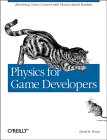
(May 1998)
For centuries scientists have tried to understand the growth and development of multicellular organisms. More recently, with the help of mathematical models and computerized simulations, they have discovered algorithmic patterns and models that seem to describe the dynamic processes in which organisms grow, reproduce, and respond to external factors. In this fascinating and beautifully illustrated book, Hans Meinhardt explains and illustrates these structural growth patterns in the case of sea shells. The book delightfully conveys the intuitive appeal and the "touch of magic" in this research. A diskette packaged with the book contains a program that allows the reader to run the simulations on a PC. New patterns can be generated interactively to provide an insight into the process of biological pattern formation.

(December 1998)
Seashells are often spirals, just like water going down the drain. There must be a connection, right? Our intuition scoffs at such a notion, but maybe they are related, writes Nature editor Philip Ball in The Self-Made Tapestry: Pattern Formation in Nature. This deep, beautiful exploration of the recurring patterns that we find both in the living and inanimate worlds will change how you think about everything from evolution to earthquakes. Not by any means a simple book, it is still completely engaging; even the occasional forays into mathematics and the abstractions of hydrodynamics are endurable, tucked as they are between Ball's bright prose and his hundreds of carefully selected illustrations. When speaking of the living world, Ball seeks to go beyond the theory of natural selection, which explains why we see certain characteristics (height, shape, camouflage), to find mechanisms that can explain how such characteristics come to be. Again, this is no easy task, but for those willing to follow his discussion, the elegance of nature is laid out in zebras' stripes, ivy leaves, and butterfly wings. Moving on to find the same patterns at work in the clouds of Jupiter and the cracks in the San Andreas fault give strength to the feeling that there are self-composing structures that guide everything in the universe toward a kind of order. The Self-Made Tapestry is a challenging look at the biggest issues in science, and well worth a thorough read. --Rob Lightner

(February 1996)
This book is the first comprehensive volume on the computer simulation of plant development. It contains a full account of the algorithms used to model plant shapes and developmental processes, Lindenmayer systems in particular. With nearly 50 color plates, the spectacular results of the modelling are vividly illustrated. "This marvelous book will occupy an important place in the scientific literature." Professor Heinz-Otto Peitgen
"The Algorithmic Beauty of Plants will perform a valuable service by popularizing this enlightening and bewitching form of mathematics." Steven Levy
" ... the garden here is full of delights and an excellent introduction to L-systems, ..." Alvy Ray Smith, IEEE Computer Graphics and its Applications

(June 1992)
First published in 1917, On Growth and Form was at once revolutionary and conservative. Scottish embryologist D'Arcy Wentworth Thompson (1860-1948) grew up in the newly cast shadow of Darwinism, and he took issue with some of the orthodoxies of the day--not because they were necessarily wrong, he said, but because they violated the spirit of Occam's razor, in which simple explanations are preferable to complex ones. In the case of such subjects as the growth of eggs, skeletons, and crystals, Thompson cited mathematical authority: these were matters of "economy and transformation," and they could be explained by laws governing surface tension and the like. (He doubtless would have enjoyed the study of fractals, which came after his time.) In On Growth and Form, he examines such matters as the curve of frequency or bell curve (which explains variations in height among 10-year-old schoolboys, the florets of a daisy, the distribution of darts on a cork board, the thickness of stripes along a zebra's flanks, the shape of mountain ranges and sand dunes) and spirals (which turn up everywhere in nature you look: in the curve of a seashell, the swirl of water boiling in a saucepan, the sweep of faraway nebulae, the twist of a strand of DNA, the turns of the labyrinth in which the legendary Minotaur lived out its days). The result is an astonishingly varied book that repays skimming and close reading alike. English biologist Sir Peter Medawar called Thompson's tome "beyond comparison the finest work of literature in all the annals of science that have been recorded in the English tongue." --Gregory McNamee

(October 2001)
Colliding billiard balls. Missile trajectories. Cornering dynamics in speeding cars. By applying the laws of physics, you can realistically model nearly everything in games that bounces around, flies, rolls, slides, or isn't sitting still, to create compelling, believable content for computer games, simulations, and animation. Physics for Game Developers serves as the starting point for those who want to enrich games with physics-based realism. Part one is a mechanics primer that reviews basic concepts and addresses aspects of rigid body dynamics, including kinematics, force, and kinetics. Part two applies these concepts to specific real-world problems, such as projectiles, boats, airplanes, and cars. Part three introduces real-time simulations and shows how they apply to computer games. Many specific game elements stand to benefit from the use of real physics, including:
The trajectory of rockets and missiles, including the effects of fuel burn off.
The collision of objects such as billiard balls.
The stability of cars racing around tight curves.
The dynamics of boats and other waterborne vehicles.
The flight path of a baseball after being struck by a bat.
The flight characteristics of airplanes.
You don't need to be a physics expert to learn from Physics for Game Developers, but the author does assume you know basic college-level classical physics. You should also be proficient in trigonometry, vector and matrix math (reference formulas and identities are included in the appendixes), and college-level calculus, including integration and differentiation of explicit functions.